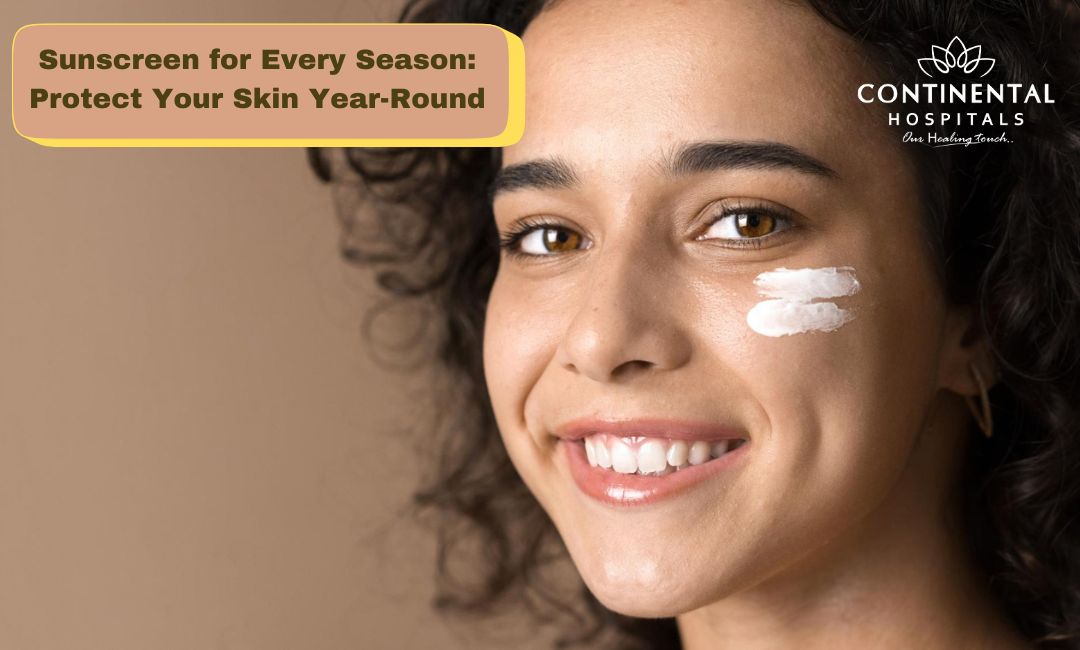Sunscreen is often associated with hot summer days and beach outings, but protecting your skin from harmful UV rays is a year-round necessity. The sun’s ultraviolet (UV) radiation can cause skin damage, premature aging, and even skin cancer, regardless of the season. This guide will delve into the importance of using sunscreen throughout the year, how different seasons affect UV exposure, and tips for choosing the right sunscreen for every season.
The Importance of Year-Round Sun Protection
Understanding UV Radiation
Ultraviolet (UV) radiation from the sun is divided into three types: UVA, UVB, and UVC. While UVC is absorbed by the Earth’s atmosphere and doesn’t reach us, UVA and UVB can penetrate the skin, causing damage.
- UVA Rays: Penetrate deeply into the skin, causing aging and long-term damage.
- UVB Rays: Responsible for sunburn and can damage the skin's surface layers.
The Risks of UV Exposure
Continuous exposure to UV radiation can lead to several skin issues, including:
🥗 Healthy Plate Challenge
🍽 Add Your Favorite Dish
Pick Your 6 favorite foods, eat, and see the results.Drag & drop foods onto your plate.
Drop Food Here
- Sunburn: Short-term skin damage causing redness and pain.
- Premature Aging: Wrinkles, leathery skin, and age spots.
- Skin Cancer: Prolonged exposure increases the risk of melanoma and other skin cancers.
How Seasons Affect UV Exposure
Spring: Reawakening and Renewed Exposure
Spring is a time when people begin to spend more time outdoors. The UV index starts to rise, and it’s crucial to reinstate sun protection routines that might have lapsed during winter.
- Key Considerations: Increased outdoor activities, gardening, and sports.
Summer: Peak UV Intensity
Summer is synonymous with the highest UV exposure due to longer days and more direct sunlight. This season requires the most vigilant sun protection measures.
- Key Considerations: Beach outings, swimming, hiking, and prolonged outdoor activities.
Fall: The Overlooked Transition
As temperatures drop, the UV index may lower, but sun protection is still necessary. Fall can be deceptive as cooler weather often leads to neglecting sunscreen.
- Key Considerations: Outdoor sports, harvest festivals, and hiking.
Winter: Hidden Dangers
Winter brings lower temperatures but not necessarily lower UV exposure. Snow can reflect UV rays, increasing exposure risks, especially at higher altitudes.
- Key Considerations: Skiing, snowboarding, and outdoor winter sports.
Choosing the Right Sunscreen for Every Season
Understanding SPF
Sun Protection Factor (SPF) measures how well a sunscreen protects against UVB rays. Higher SPF provides more protection, but no sunscreen can block 100% of UV rays. Dermatologists generally recommend using SPF 30 or higher.
Broad-Spectrum Protection
Always opt for broad-spectrum sunscreens, which protect against both UVA and UVB rays. This ensures comprehensive protection from sunburn and long-term skin damage.
Water-Resistant Formulas
For activities involving water or sweat, choose water-resistant sunscreens. These formulas provide longer-lasting protection but should still be reapplied regularly.
Seasonal Sunscreen Recommendations
Spring: Light and Moisturizing Formulas
Spring requires a balance between hydration and protection. Look for lightweight, moisturizing sunscreens that won’t feel heavy on the skin.
- Recommended Types: Gel-based, hydrating lotions, and moisturizers with SPF.
- Key Ingredients: Hyaluronic acid for moisture, antioxidants for extra protection.
Summer: High SPF and Robust Formulas
In summer, high SPF and water-resistant formulas are essential due to increased UV intensity and activities involving water.
- Recommended Types: Water-resistant lotions, sprays, and mineral sunscreens.
- Key Ingredients: Zinc oxide or titanium dioxide for physical blocking, aloe vera for soothing.
Fall: Balanced Protection and Hydration
As the weather cools, continue to use sunscreens that offer both protection and hydration. This season calls for formulas that can handle the transition from warm to cool temperatures.
- Recommended Types: Creams and lotions with SPF, oil-free for those prone to breakouts.
- Key Ingredients: Ceramides for skin barrier support, antioxidants for environmental protection.
Winter: Strong and Moisturizing Formulas
Winter demands sunscreens that provide moisture and protection, especially with the reflective properties of snow.
- Recommended Types: Rich creams and balms, stick sunscreens for easy application.
- Key Ingredients: Shea butter for intense hydration, niacinamide for barrier repair.
Application Tips for Optimal Protection
Proper Application Techniques
- Amount: Use about one ounce (a shot glass full) for full body coverage.
- Frequency: Reapply every two hours, or immediately after swimming or sweating.
- Areas Often Missed: Ears, back of the neck, tops of feet, and hands.
Sunscreen and Makeup
For those who wear makeup, consider using a foundation with SPF or apply a sunscreen powder over makeup for additional protection.
Special Considerations for Children
Children have more sensitive skin and require sunscreens specifically formulated for their delicate skin. Look for gentle, hypoallergenic options with high SPF.
Conclusion
Sunscreen is an essential part of a year-round skincare routine. Each season brings unique challenges and requires different types of protection. By understanding the nuances of UV exposure throughout the year and choosing the right products, you can protect your skin from the harmful effects of the sun every day. Remember, consistent application and proper sunscreen use are key to maintaining healthy, youthful skin.
Related Blog Articles:
.webp)














